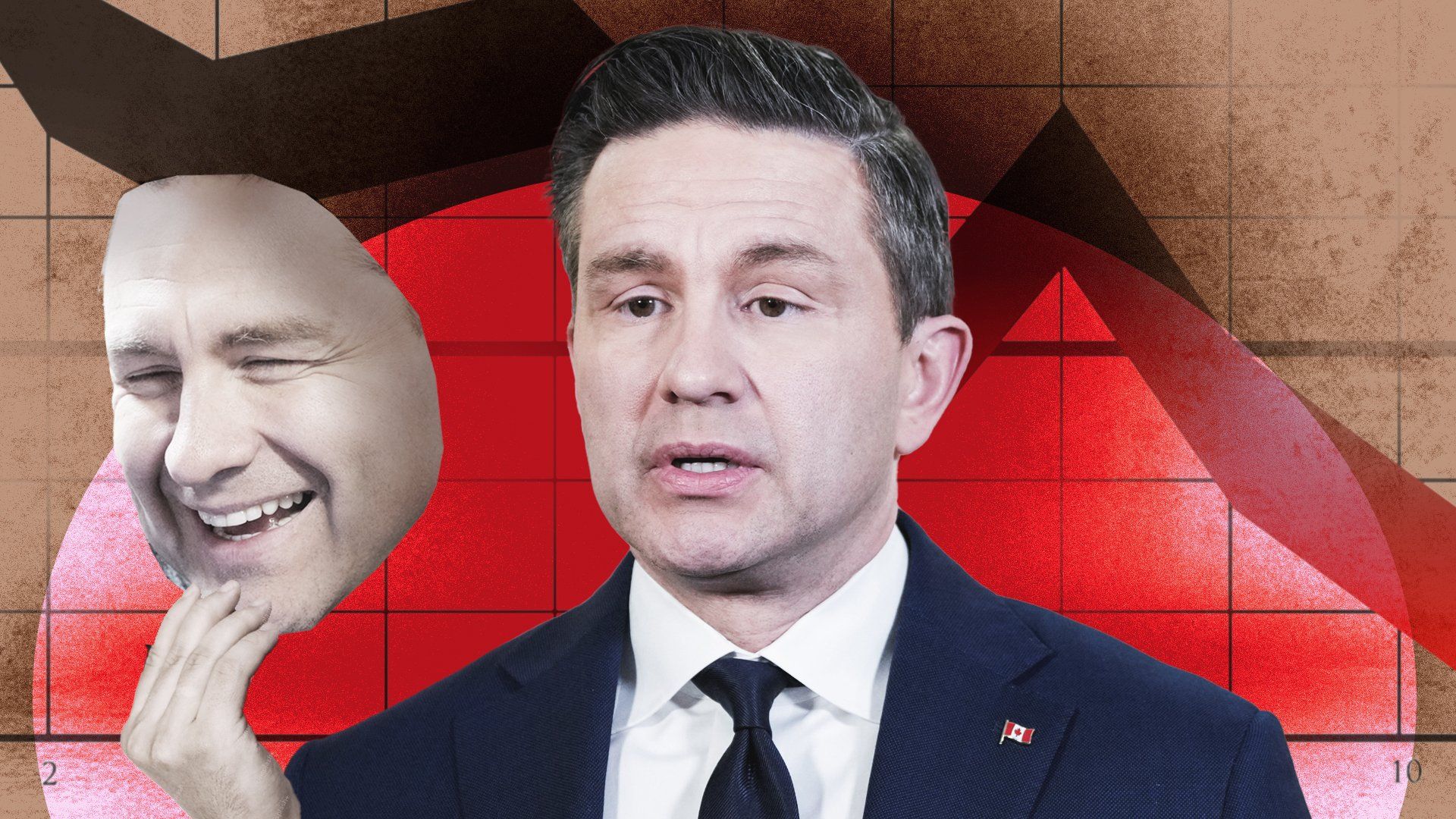When the truckers’ convoy rolled into Ottawa in a cacophonous cloud of diesel smoke in January 2022, Canada’s Conservative Party was led by Erin O’Toole, a mild-mannered centrist who had been trying to keep his party moderate enough to appeal to voters in Ontario suburbs.
The arrival of thousands of horn-honking, anti-vaccine protesters scrambled the opinion environment in the Conservative world, and, within days, O’Toole was out. Pierre Poilievre, who had delivered Tim Hortons coffee to the truckers while O’Toole vacillated, took his place, decisively winning the leadership race that followed.
Poilievre was already in tune with the movement. In 2020, he launched an online petition against the World Economic Forum, warning of a “Great Reset,” an idea popular among the conspiratorial anti-government groups that organized the convoy.
Ever since, Poilievre has stuck with the people whose fury he rode to the leadership of his party. A Westerner with roots in the populist Reform Party, Poilievre put “freedom” at the heart of his pitch to voters. Over the past three years, he succeeded in convincing Canadians weary of Justin Trudeau that he would be the libertarian agent of change who would finally remove the gatekeepers standing in the way of prosperity.
From September 2022 until last month, Poilievre was ahead of the unpopular Liberals, usually by double digits. A decisive Conservative majority seemed assured.
Then Donald Trump was elected, Chrystia Freeland resigned, Trudeau was forced out and replaced by Mark Carney, and all the polls suddenly show the Liberals far ahead and expected to win a majority government on April 28.
Poilievre is still holding huge, enthusiastic rallies, and his party’s vote share has not cratered, but NDP and Bloc Québécois supporters, rattled by Trump’s threats, have shifted to Carney, leaving Poilievre with his base. In parliamentary districts across the country, the shift of NDP votes to the Liberals is likely to cost the Conservatives as the left-of-center vote consolidates.
Pollster Frank Graves, whose polls for Ekos Research Associates were the first to detect the swing to the Liberals, has found that a big portion of the Conservative base is more likely to support the “freedom movement” and to believe the disinformation about vaccines that energized it, which is suddenly a big political problem.
“Having a group of emotionally engaged people is fine, but you still need to have enough of them to win an election,” says Graves. “And what [Poilievre] had in place was a group of 25% of voters, roughly who look just like Trump supporters.”
Trump’s annexation threats have rattled Canadians who sense that the Conservatives are more in tune with that energized base than with moderate voters who are suddenly gravely concerned about a threat from south of the border to their economic well-being and sovereignty.
Mark Bourrie, author of the recently published “Ripper: The Making of Pierre Poilievre,” a critical political biography, sees him as a Trumpian figure.
“His vision of this country is one where he can say what he wants, bullies opponents, attacks enemies of his choosing and not be faced with criticism,” Bourrie writes. “We can look south to see what happens when this becomes normalized.”
It looks like voters see him as Trumpian. Crucially, as Trump attacked Canada, Poilievre kept attacking Trudeau. He eventually took on Trump as well, but it may have been too late. And his campaign looks like it was designed to beat Trudeau.
“They’re running the campaign that they planned to run, no matter what,” Bourrie said in an interview this week. “They’re not letting go of that campaign. That’s a problem for them.”
Conservatives outside the Poilievre operation who are alarmed at the prospect of losing a fourth straight election to the Liberals have urged the campaign to take a different tone, pointing to Doug Ford’s successful pivot in the recent Ontario election, during which he promised to stand up to Trump.
Pollster David Coletto, whose Abacus Data shows the Conservatives in better shape than Ekos does, thinks they have a major problem. While 27% of Canadians say they have a very positive impression of Poilievre, 30% have a very negative impression of him.
“There is a fan base out there, and it’s engaged, and they like him and they like his outlook and his perspective, but that group can’t win you an election.”
It looks like the strong disapproval of Trudeau for the past two years masked the underlying weakness of the Conservative electoral coalition, and, as soon as he was gone, the mask started to come undone, revealing a country that, for demographic reasons, has a natural tendency to elect progressives.
“I’ve always believed the Conservatives don’t have a natural majority to win,” says Coletto. “There isn’t a natural majority, especially when the structural advantages that might have existed with a stronger NDP disappear.”
There are 25 days until Election Day, and unless some big things change soon, it looks like Poilievre will discover that the supporters who brought him close to the pinnacle of power were the wrong people to get him over the top.
